Monday April 8, 2019
Road video and map – Flagstaff to Sedona, AZ
Today was a short, but enjoyable, day as I moved on from Flagstaff to Sedona, AZ. The area around Sedona is known as red rock country and the scenery is spectacular. Unfortunately, almost all of the roadside parking areas were full and I was only able to stop twice, neither of which worked out very well. At the first, Oak Creek Canyon Vista, the viewpoint was closed due to the area having been taken over by wasps that were stinging visitors and, at the second, I was only able to park in an illegal spot for a few moments to take a quick photo and could not get to the viewpoint. However, the road video captured much of the scenery and watching it will give you an idea of how beautiful the area is.
The day started later than most because the program at my first stop, The Lowell Observatory in Flagstaff, did not start until 10:30 AM. This is an unusual astronomical observatory because it is a privately owned, non-profit institution that was founded in 1894 by wealthy Bostonian Percival Lowell. It has, however, been the location of a number of important discoveries and programs:
- The discovery of galactic red-shift, demonstrating the expansion of the universe in 1912
- The discovery of Pluto in 1930
- The mapping of the moon for NASA in preparation for the Apollo missions in the 1960s
- The discovery of the rings of Uranus in 1977
The highlight of the visit was seeing the Clark Telescope, used for three of the items above (not Pluto). The observatory has several other sites with modern research telescopes and the Flagstaff site is now used only for public education programs. This meant we were able to get up close and see the telescope in motion which has not been possible at other observatories I have visited. I thoroughly enjoyed the experience and, given the disappointment of my roadside stops, wished I had stayed there for an extra hour to take the Pluto Discovery tour and see that telescope. They also have night viewing programs that sound great.
My last stop was at the magnificent Chapel of the Holy Cross in Sedona. This was conceived by local sculptor Marguerite Brunswig who was able to convince local environmentalists, politicians and The Catholic Church to help her realize her concept in the red rock buttes of Sedona in 1956. The chapel itself is small and simple but the concept is astounding and the surroundings amazing.
The Clark telescope was one of the first large telescopes used in the US and is very impressive up close.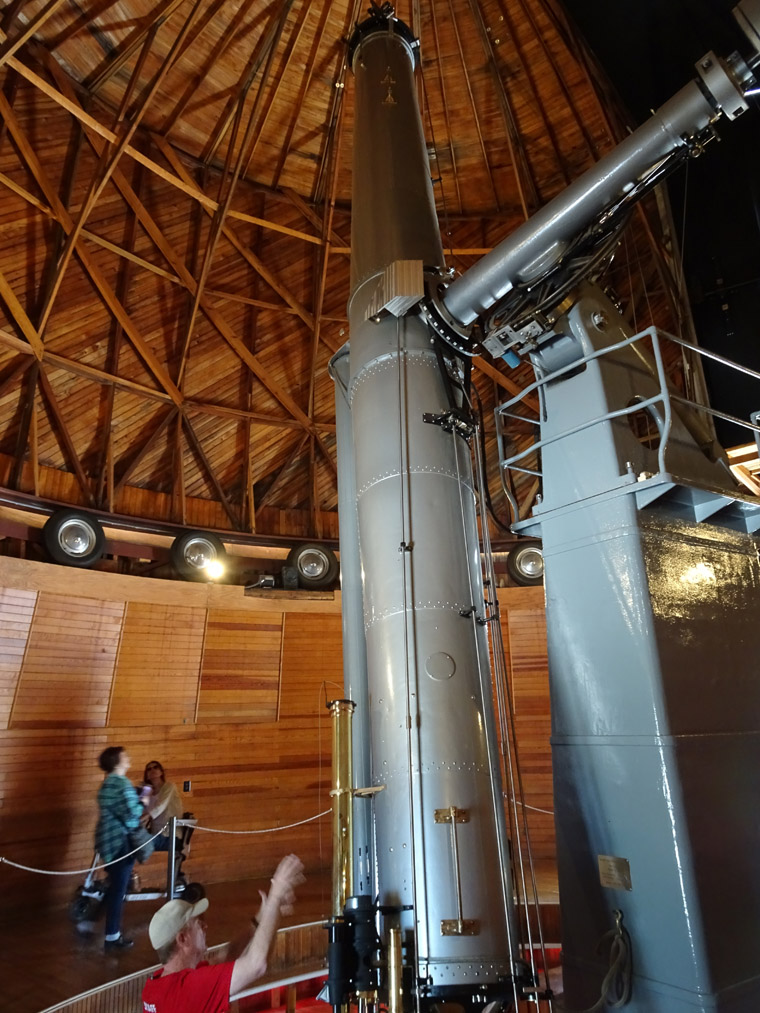
When first installed electric power was not available to rotate the dome roof which was made of canvas to be light enough to be hand cranked. When electric motors and a wooden roof were added in the early 1900s Ford vehicle wheels were used to support it.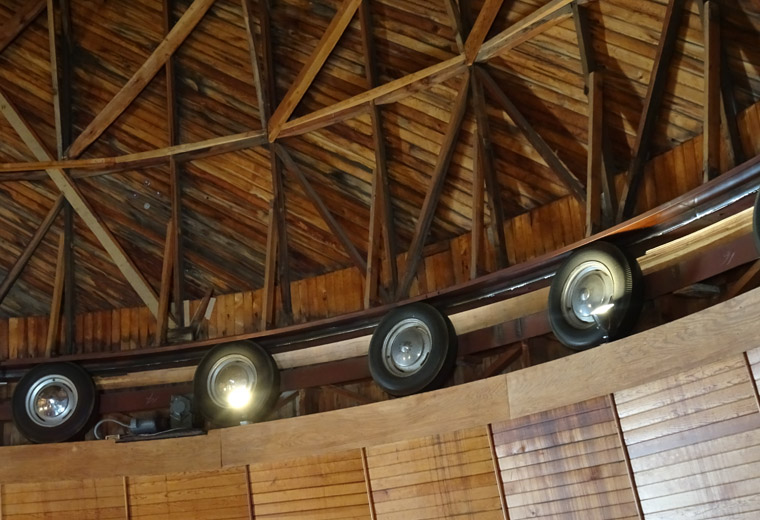
Two exterior views of The Chapel of the Holy Cross give an idea of how it is blended with its surroundings.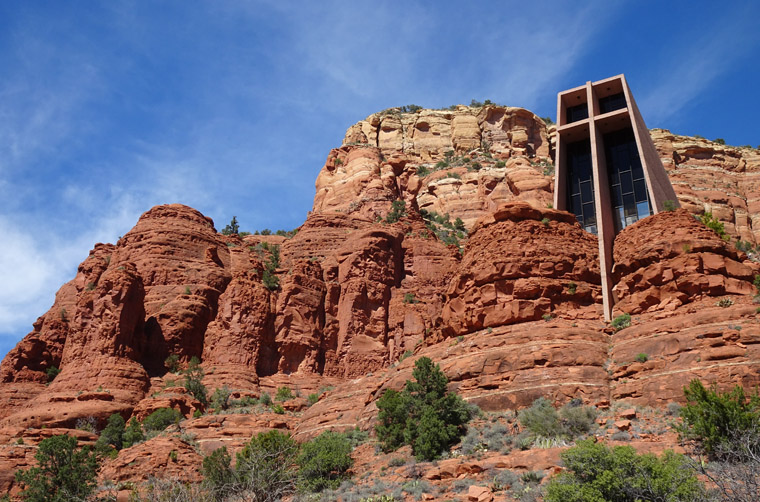
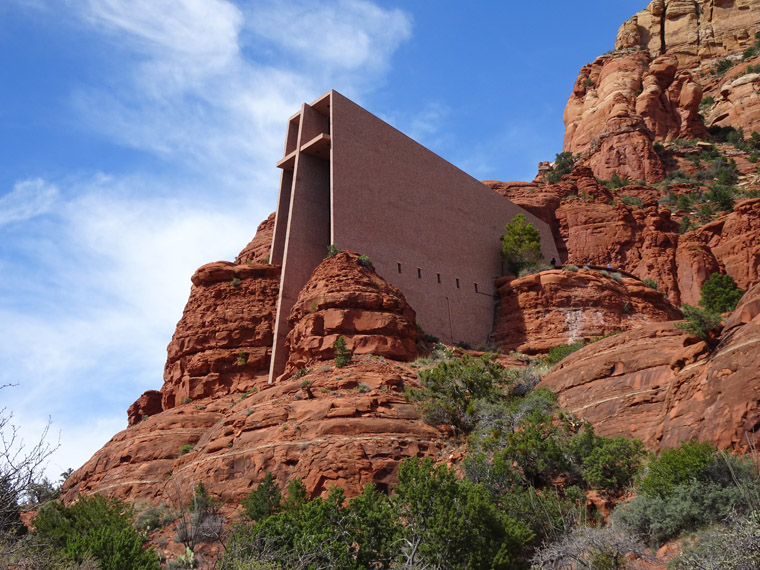
The interior is small and simple. The chapel is owned and operated by the Catholic Church but regular services are not held here.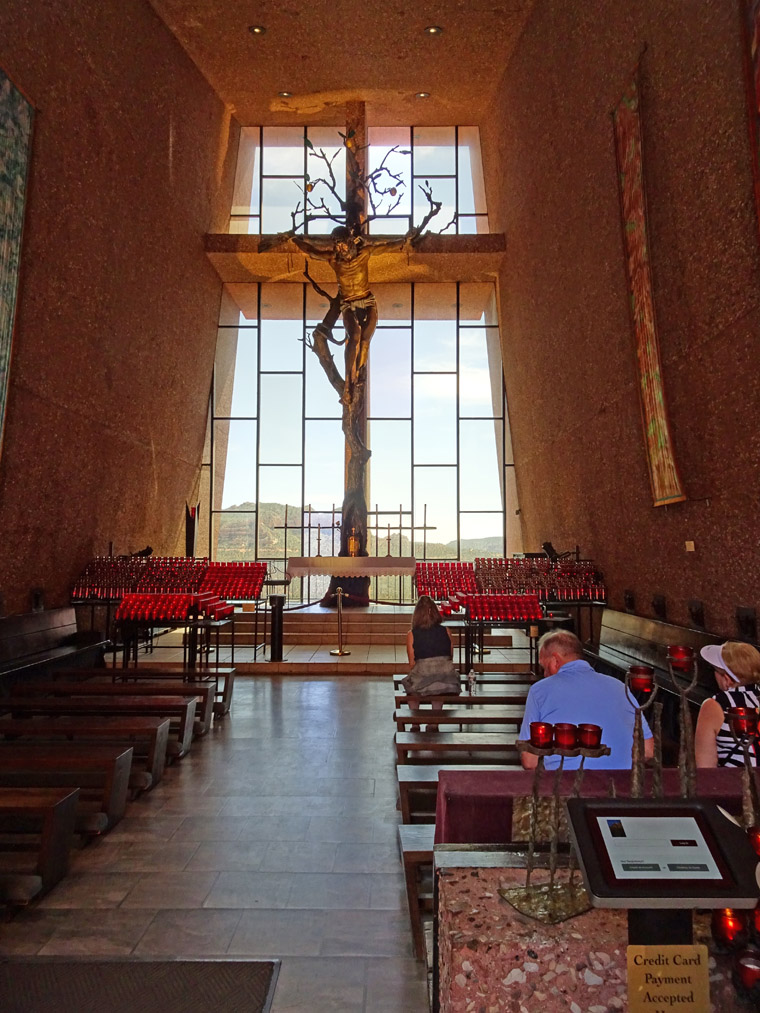
The views from the chapel are stunning but the rocks tower so high that I was not able to get a good panorama shot with my camera. These shots give an idea of what can be seen but, like the Grand Canyon, you just have to visit.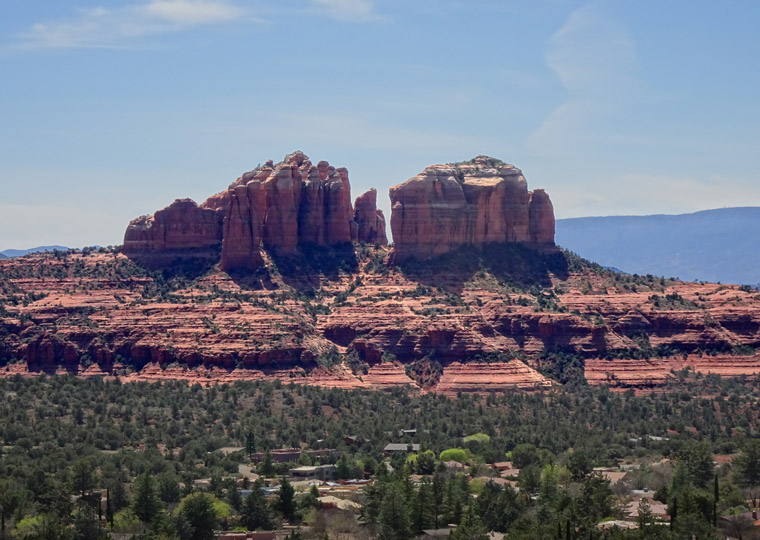
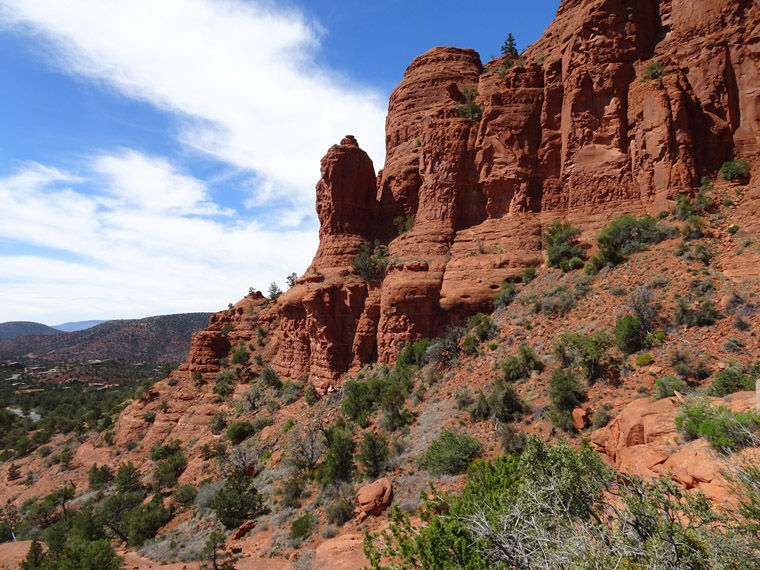

We loved Sedona too. Enjoy your onward travels.
I’m not surprised. It’s beautiful.